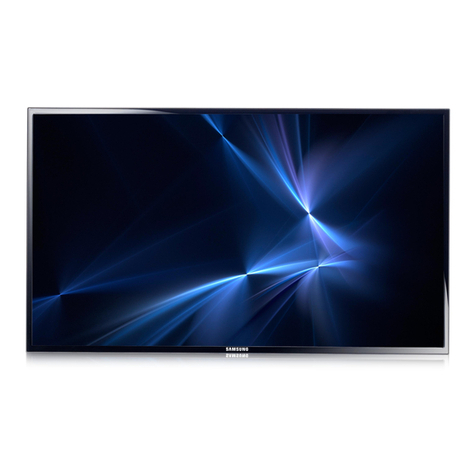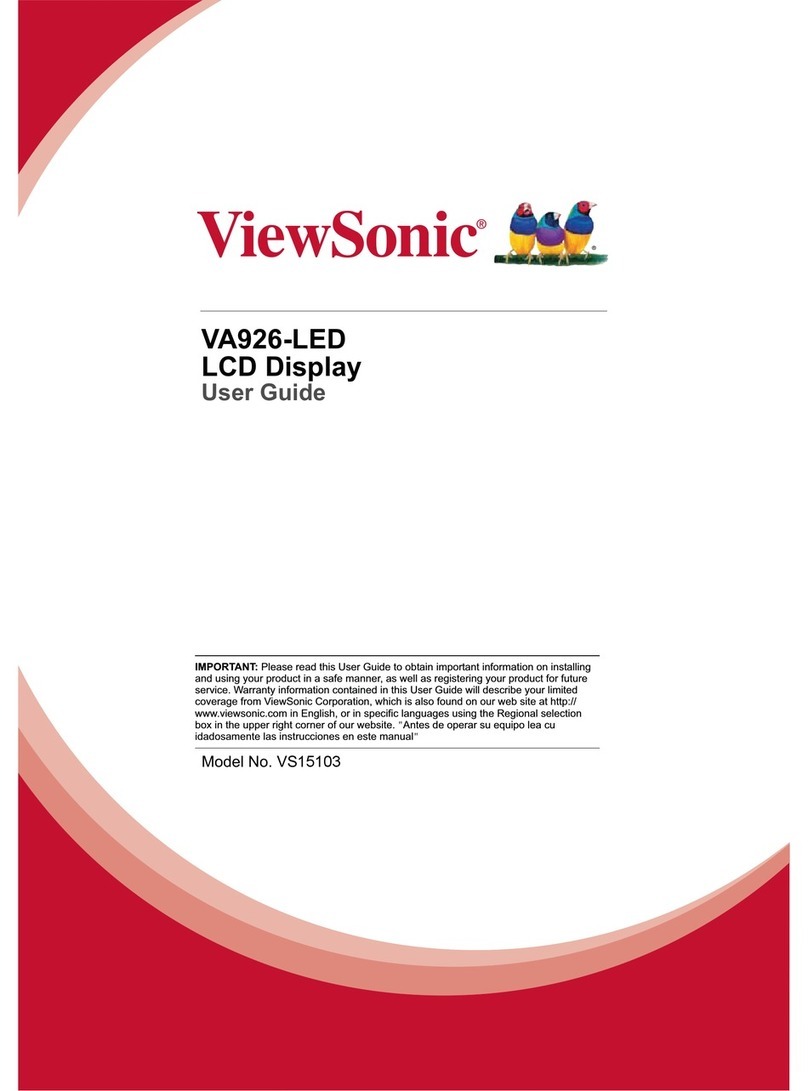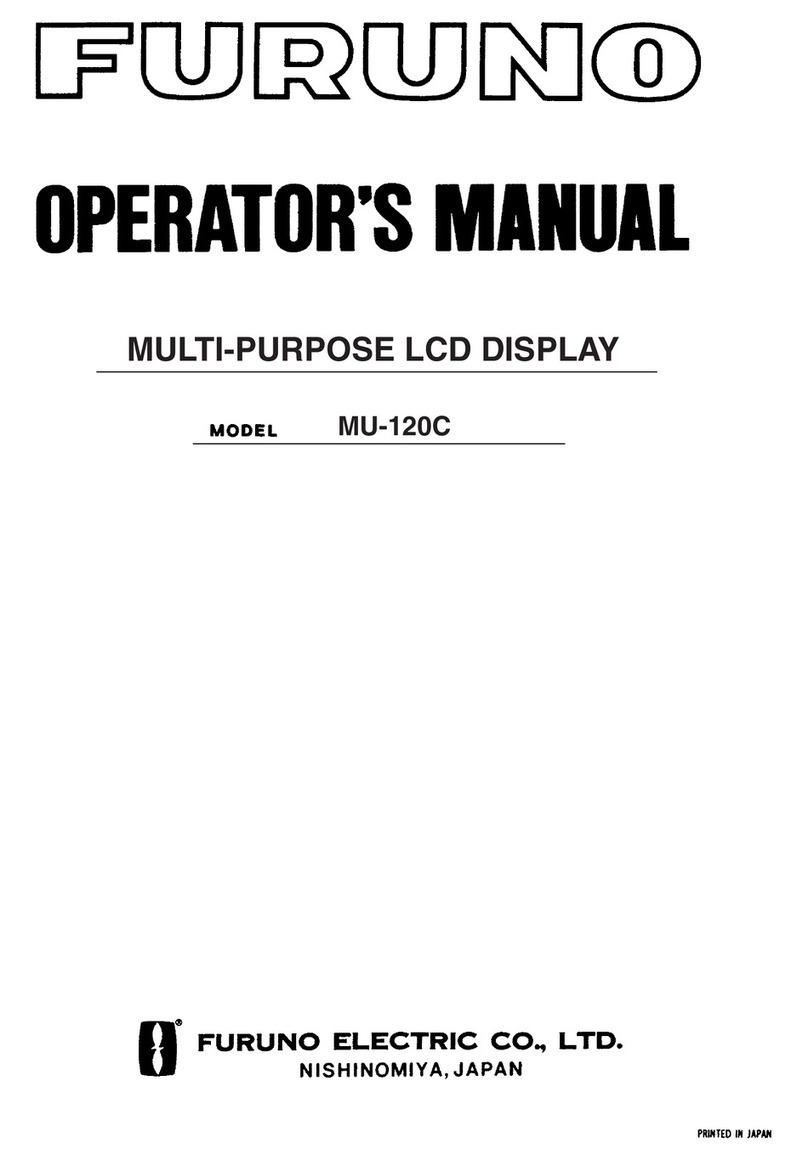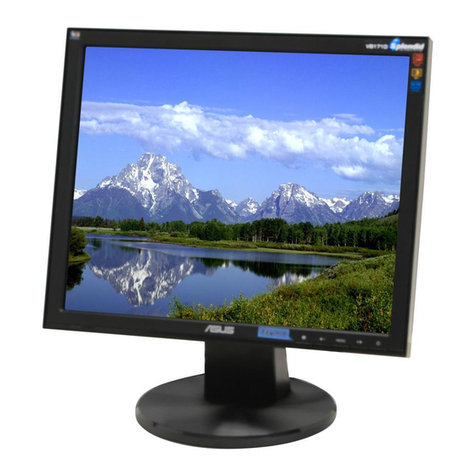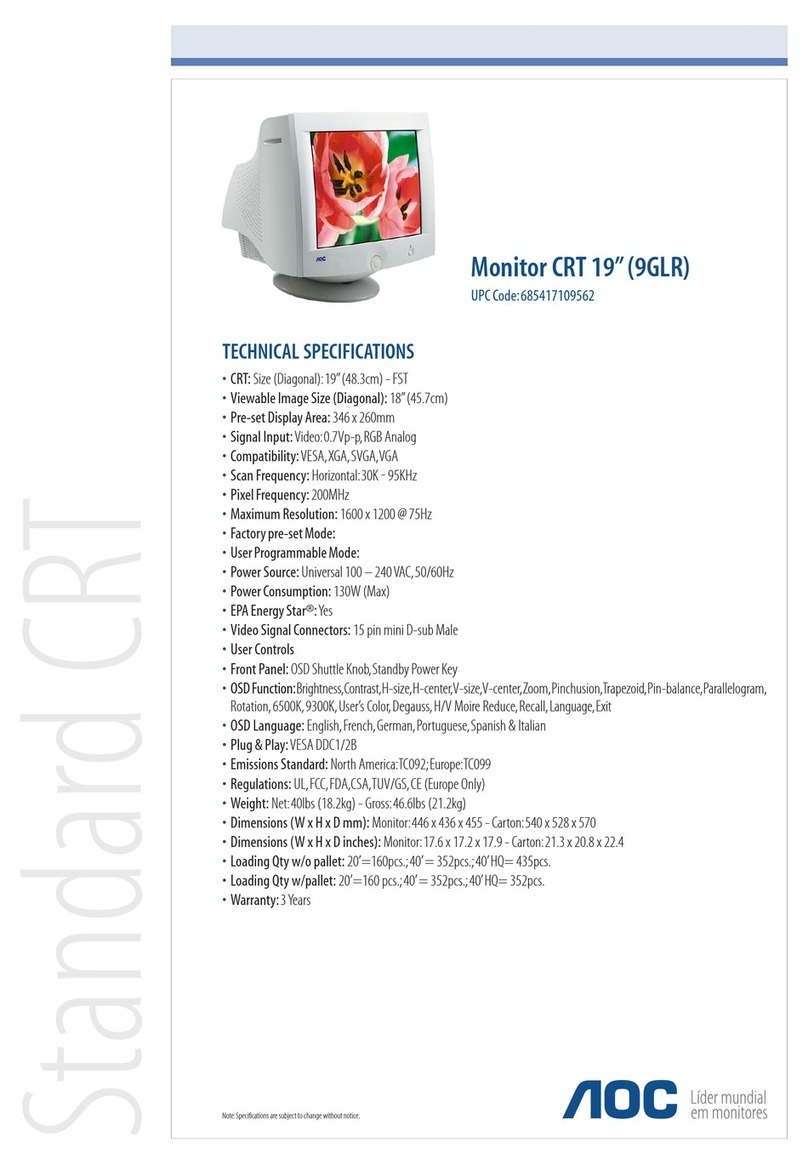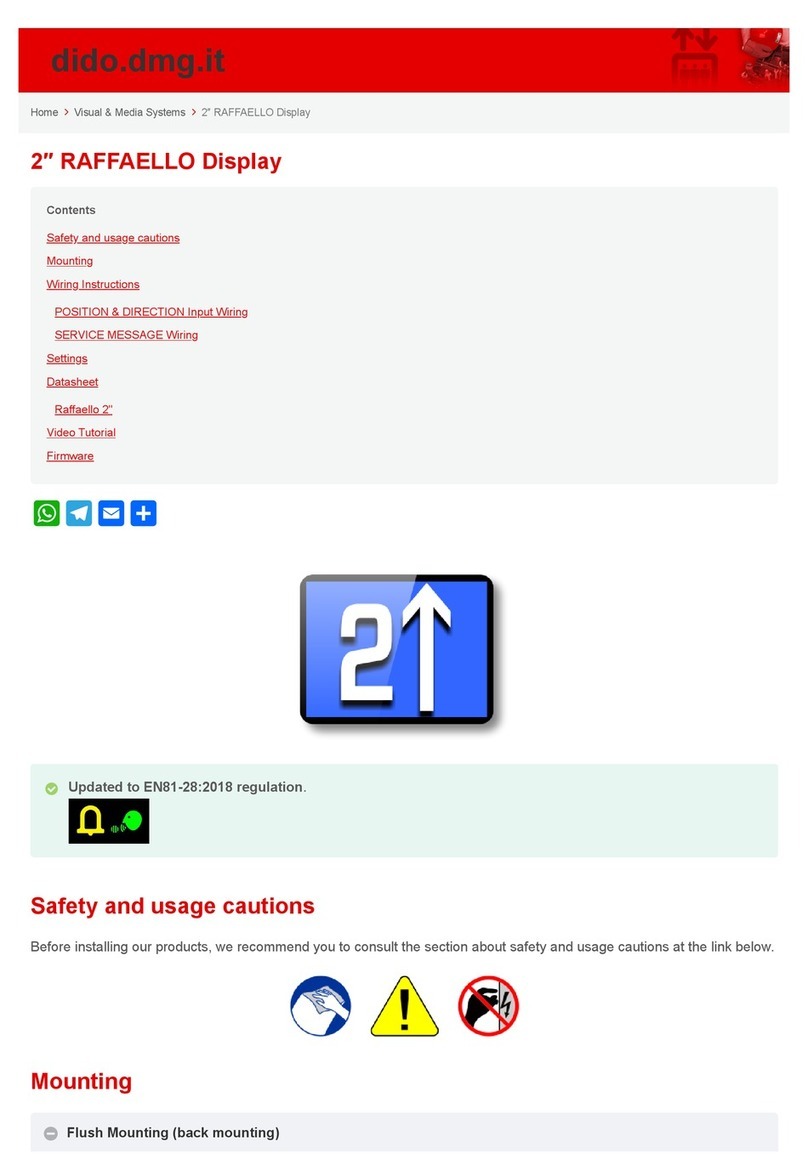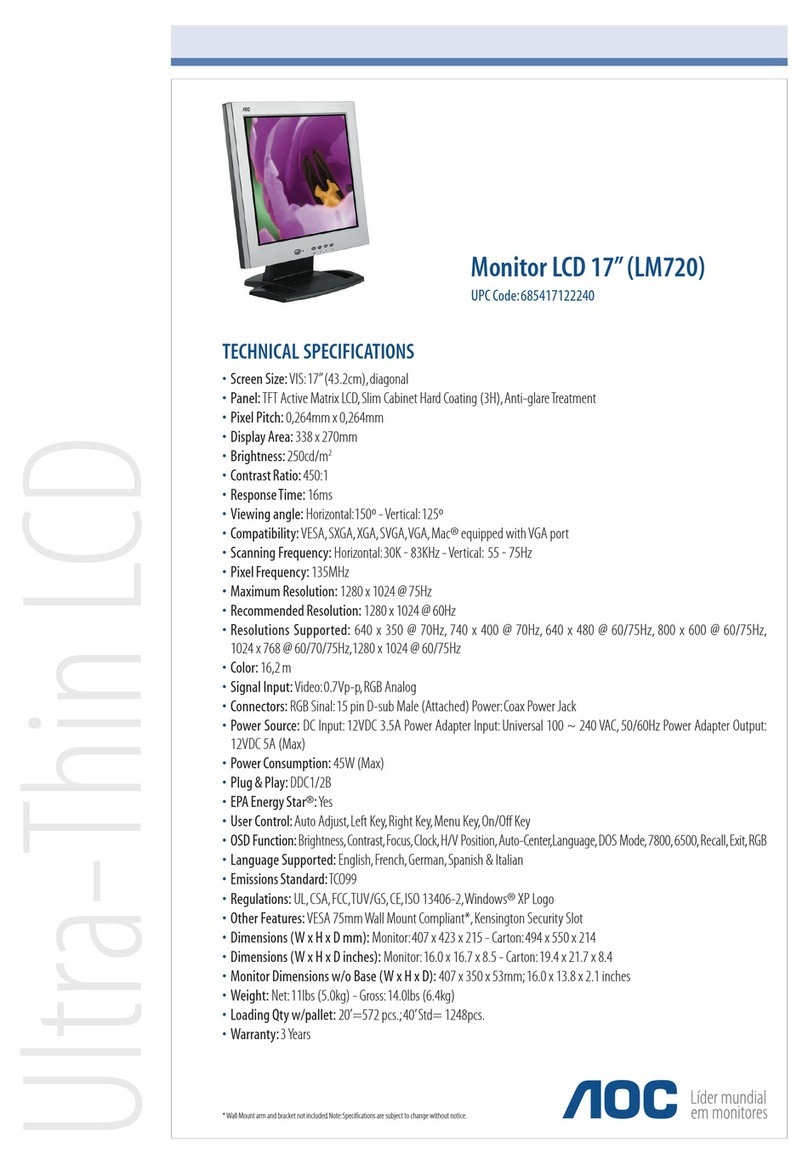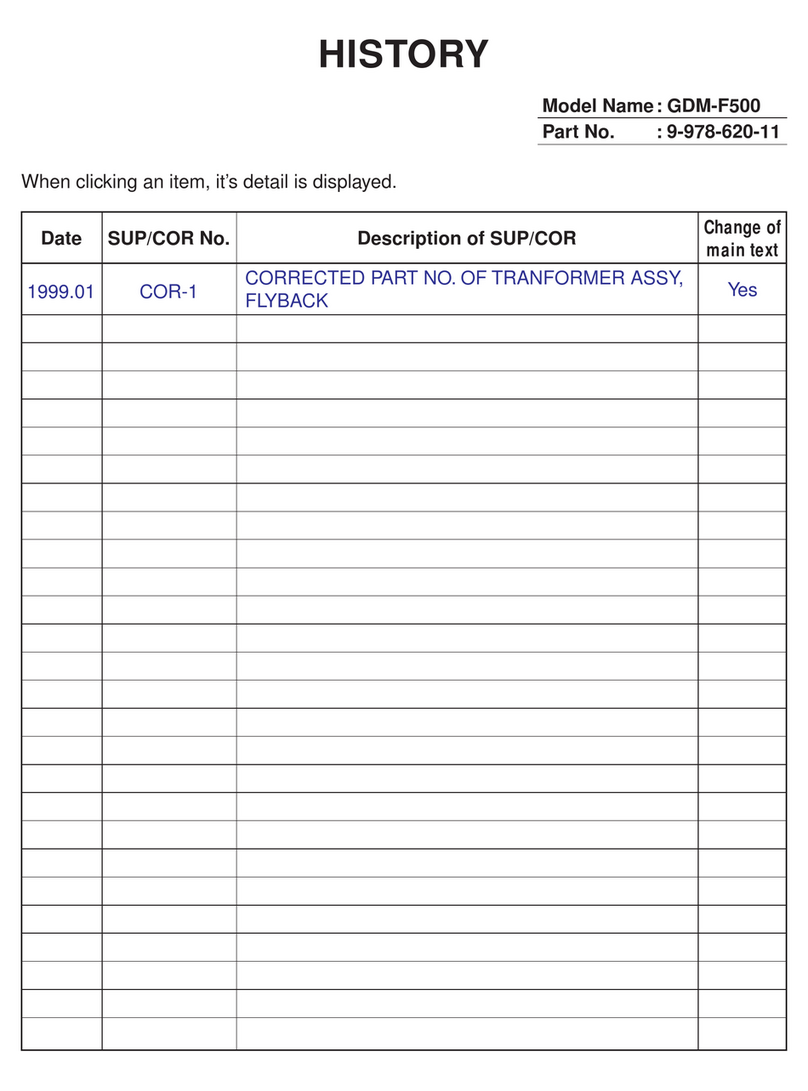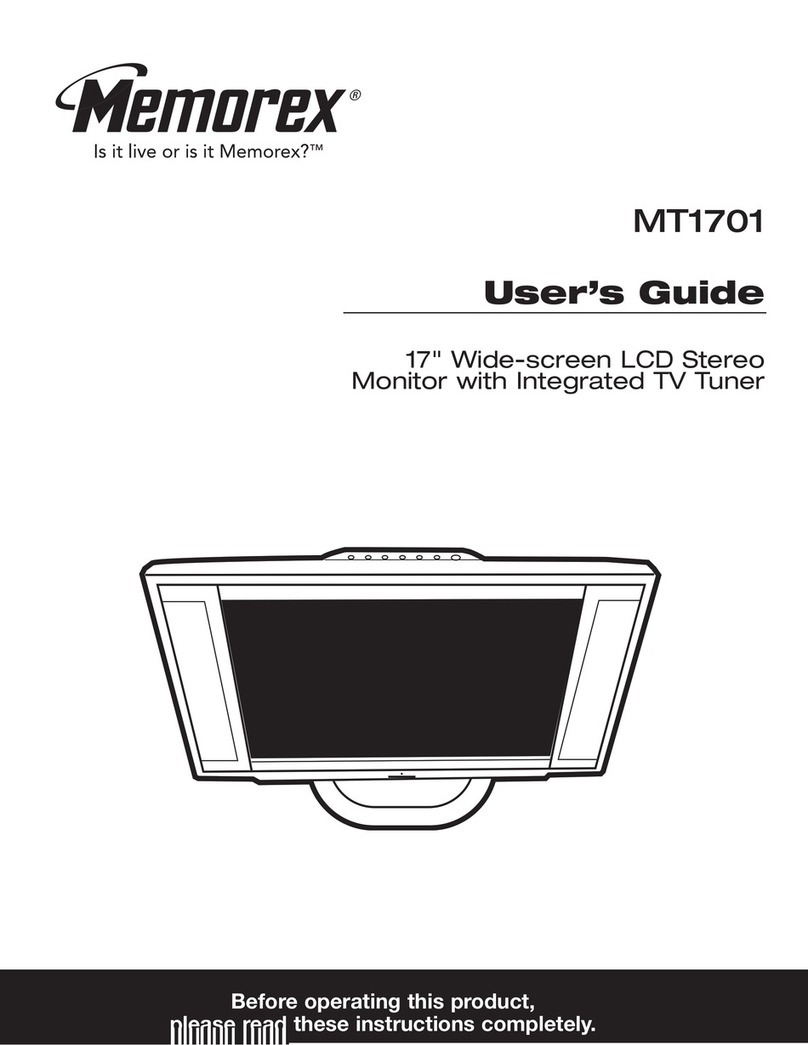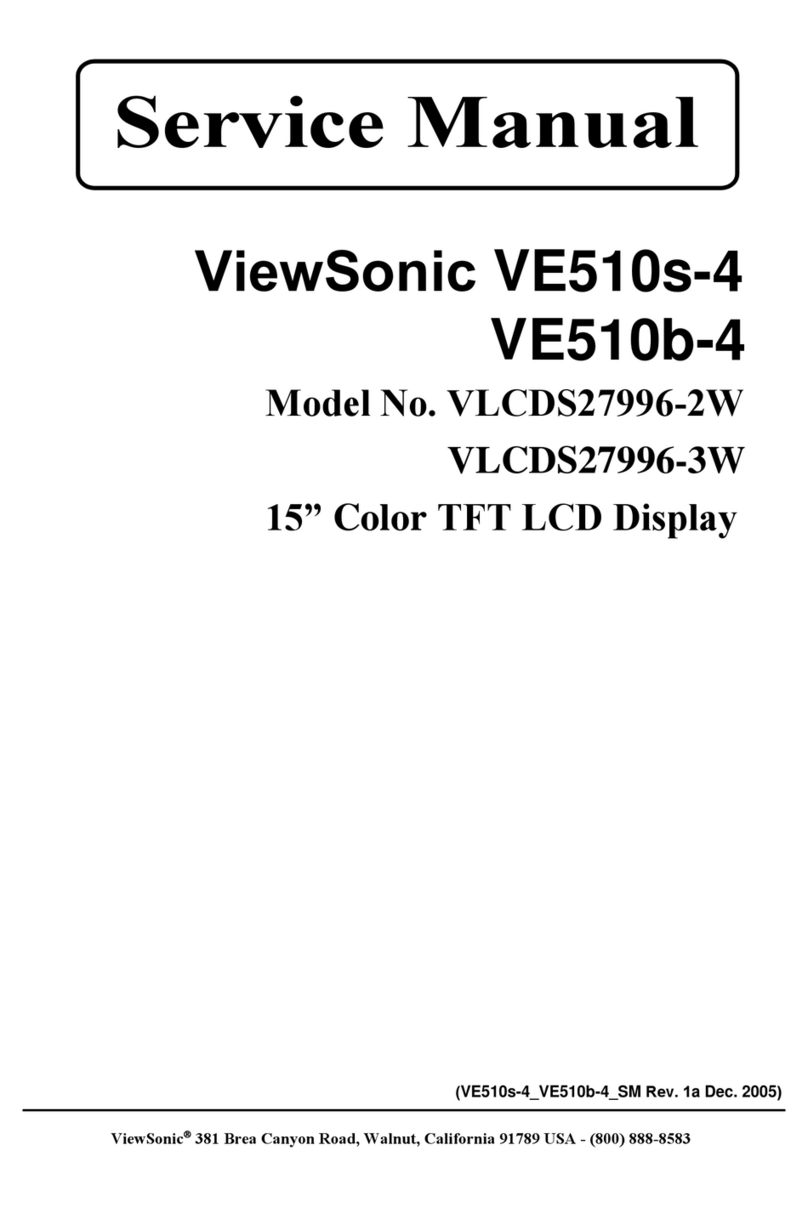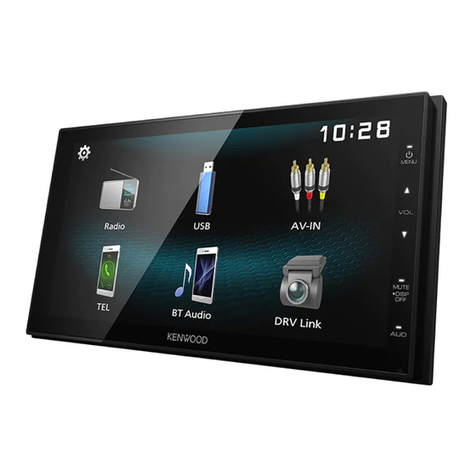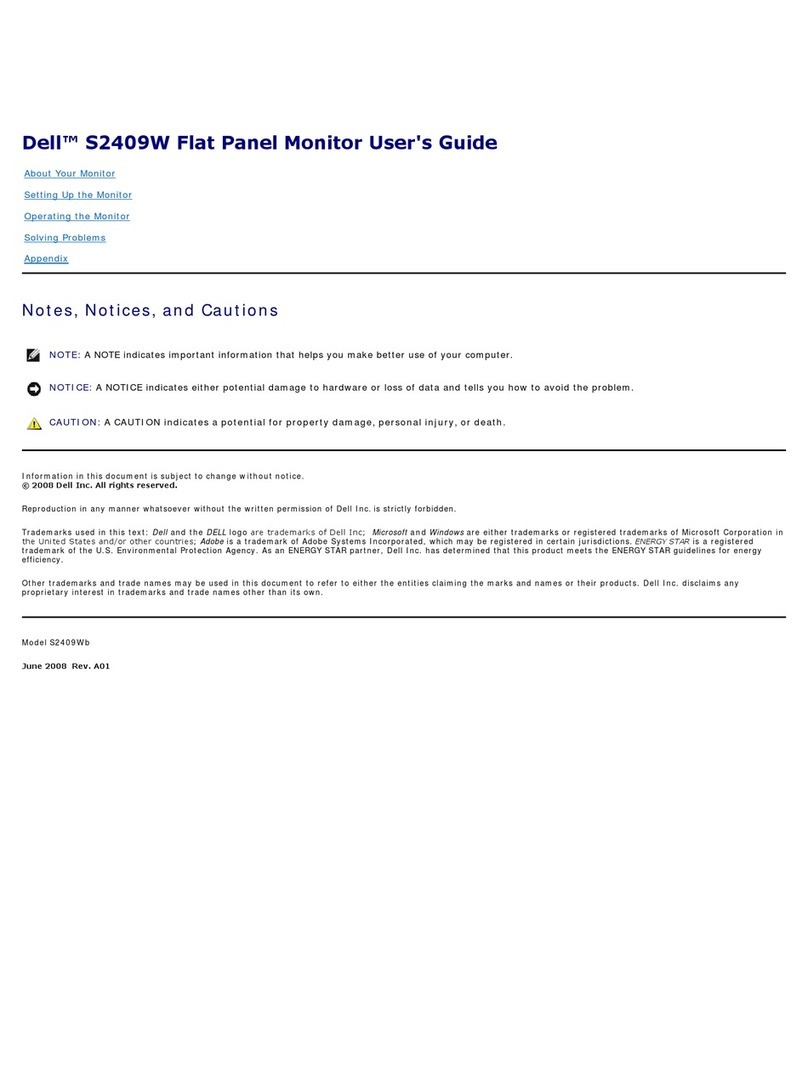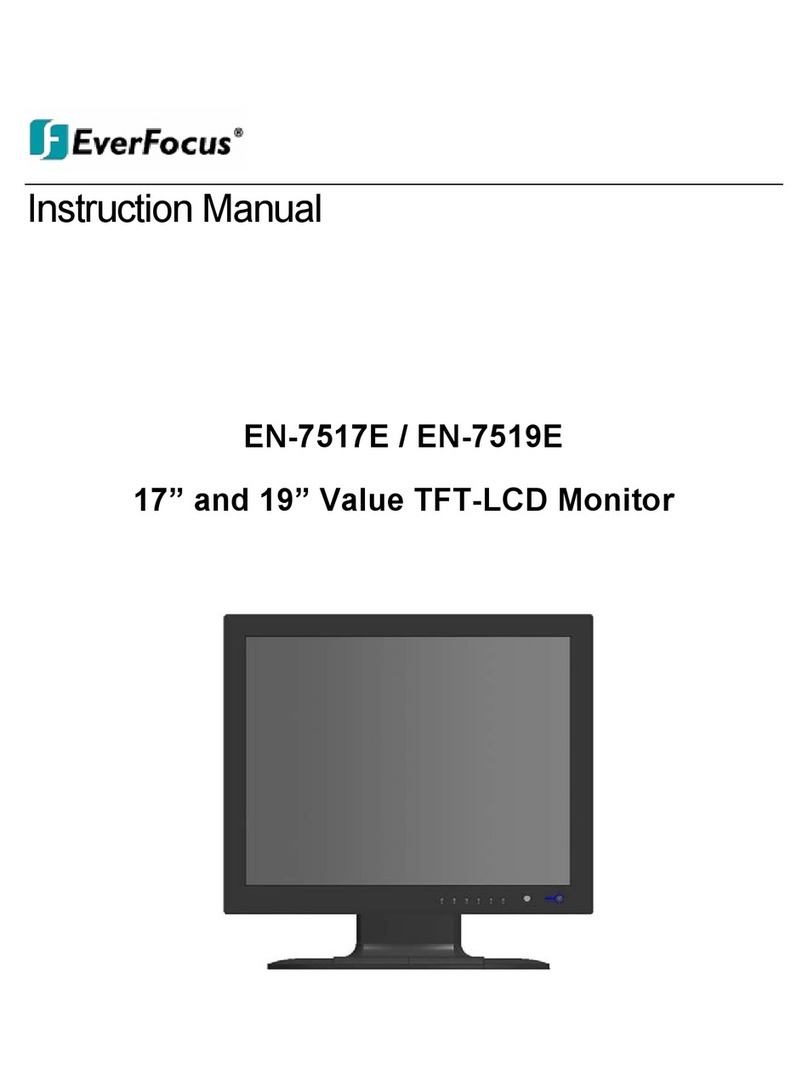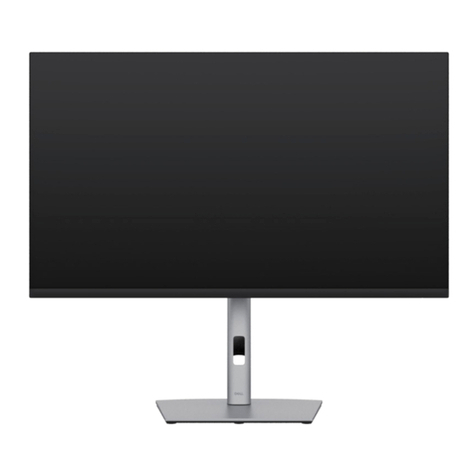Allen Organ Company LLC GeniSys Display User manual

GeniSys™ Display
Reference Guide
Copyright © 2018 Allen Organ Company LLC
All Rights Reserved
AOC P/N 033 00255 3 Revised 3/2020

CONTENTS
I. GENISYS™ DISPLAY REFERENCE GUIDE............................................................................1
A. BASIC OPERATION.....................................................................................................................1
1. Start Up Sequence...........................................................................................................................................1
2. Capture Memory Physics.................................................................................................................................2
3. Locking Capture Memories..............................................................................................................................2
4. Unlocking Memories Using Your Code...........................................................................................................3
5. Stoplist Library............................................................................................................................................3
6. Acoustic Portrait..........................................................................................................................................3
7. Alternate/Global Tuning..................................................................................................................................4
8. Unlocking All Capture Memories....................................................................................................................5
9. GeniSys™ Voices (optional on some models).................................................................................................5
B. USB OPERATION........................................................................................................................11
1. USB Memory Port.........................................................................................................................................11
2. Recorder.........................................................................................................................................................11
3. Hymn Player..................................................................................................................................................14
4. Performance Player........................................................................................................................................15
5. “Remote” Access Functionality (GeniSys Display v1.10 or later)..................................................................15
6. Capture Load/Save.........................................................................................................................................16
7. GeniSysTM Voices Piston Mode......................................................................................................................17
C. ADVANCED OPERATION.........................................................................................................18
1. Configuring General Pistons..........................................................................................................................18
2. Restoring Original Factory Settings...............................................................................................................19
3. Self Check; Stop Action and Capture.............................................................................................................19
4. Sostenuto (optional – requires Sustain Kick Switch)......................................................................................19
5. Modifying Crescendo and Tutti B Settings....................................................................................................20
D. MIDI FUNCTIONS......................................................................................................................22
1. Standard MIDI Channel Assignments............................................................................................................22
2. Selecting Program Change Modes.................................................................................................................23
3. MIDI Bank Selecting.....................................................................................................................................24
4. Assigning MIDI Program Changes to Pistons................................................................................................24
5. MIDI Base Channel.......................................................................................................................................25
6. MIDI Expression Settings..............................................................................................................................25
7. MIDI Sustain Kick Switch (optional).............................................................................................................26
8. Organ Local Off.............................................................................................................................................27
10. Transmission/Reception of Individual Stop Data.........................................................................................27
E. MIDI GUIDE.................................................................................................................................28
1. MIDI for Organists.........................................................................................................................................28
2. Allen’s Exclusive MIDI System.....................................................................................................................29
4. General MIDI Sound List...............................................................................................................................31
APPENDIX A: MIDI IMPLEMENTATION CHART.................................................................32
APPENDIX B: VISUAL NOTE RANGE CHART......................................................................33
APPENDIX C: ADVANCED MIDI INFORMATION................................................................34
APPENDIX D: GNU PUBLIC LICENSE INFORMATION.......................................................38
i

I. GENISYS™ DISPLAY REFERENCE GUIDE
INTR DUCTI N
The GeniSys™ Display is an interface that controls many organ functions and a variety of MIDI
functions. The GeniSys™ Display includes an LCD (liquid crystal display) GUI (graphical user
interface) touch screen that displays a variety of functions, at any given time. The GeniSys™
operation software is vast. While the GeniSys™ Display operation is simplistic, many of the
features require more in depth details. This guide will attempt to explain those details.
A. BASIC PERATI N
1. Start-Up Sequence
Turn on the organ's main power switch. The organ will take several seconds to start up
before it is ready to be played. It is important that no keys, pedals or stop controls are pressed
or operated while the organ is starting up as this could cause errors to occur. During the start
up sequence, the GeniSys™ Display will display the Allen Organ logo and also indicate the
main computer’s status. Once the organ has completed starting up, the GeniSys™ Display
will display the “home” screen indicating the organ is ready to play.
Important: The Allen Organ includes several self testing features. If a warning is displayed
within this sequence, please contact your Allen authorized representative immediately!
The Home” screen displays the current Transposer setting, capture memory level (and lock
condition of the memory level), expression/crescendo positions, voicing suite, Tutti and
Crescendo B selections (if active) and the last piston/toe stud selection (if active).
To access a specific function, simply touch a button or area of the screen. For example, to
change the Transposer setting, touch the Transposer button and GeniSys™ Display will enter
the Transposer control screen. To return to the Home” screen, touch the HOME button.
Most of the function screens contain two navigation buttons; BACK and HOME. The BACK
button will move the screen back to the previous screen/function/menu while the HOME
button will return the display to the Home” screen.
Important!: Only a light touch is needed to select the buttons on the GeniSys™ Display
touch screen. Use only the tip or pad of your finger to touch the screen. Do NOT use any
sharp objects such as fingernails, pencil/pen tip, etc. to touch the screen as this could scratch
and irreparably damage the touch screen display.
1

The GeniSys™ Display screen is very bright so that the contents of the screen can be seen in
brightly lit environments. However, there maybe times where the brightness of the screen can
interfere with the organist and/or environment, ex: candlelight or evening services.
Therefore, GeniSys™ Display includes a special “hidden” function to turn off the display for
those times. To turn off the display, simply touch the screen anywhere within the expression/
crescendo bar graph area and the screen will turn off (see illustration below).
To turn the display back on, touch any area of the screen.
2. Capture Memory Physics
The capture memories allow you to save different registrations on each piston/toe stud. This
means General Piston 1 on Memory 1 can be totally different from General Piston 1 on
Memory 2, 3, 4, etc. Select a different capture memory level by touching the Memory level
button on the GeniSys™ Display and then use the up and down buttons to select a different
memory level number. Return to the Home screen by touching the HOME button.
3. Locking Capture Memories
All memories, except Memory 1, may be locked or unlocked individually to prevent
unintentional or unauthorized changes to that memory’s contents.
Note: Memory 1 remains unlocked as a convenience to visiting or substitute organists (if
applicable).
The Memory level button within the GeniSys Display includes a “padlock” illustration to
indicate whether the selected capture memory level is locked or unlocked.
To lock a selected memory level, touch the Memory level button on the GeniSys™ Display to
enter the memory level selection screen. Then, touch the padlock button to enter the memory
combo lock screen. Enter a three digit lock code using any combination of the six (6)
available buttons on the display. Once a code has been entered, press the ENTER button to
lock the memory level. If a change to a number is needed before the ENTER button is
pressed, press the RESET button to clear the code to start over. Once the ENTER button is
pressed, the memory level will be locked and the RESET button will only clear the code
number displayed. The lock code needs to be re entered to unlock the memory level.
Remember! Choose an easy to remember three digit code.
Note: Each capture memory level lock code can be different!
2
Touch Here

4. Unlocking Memories Using Your Code
To unlock a selected memory level, touch the Memory level button on the GeniSys™ Display
to enter the memory level selection screen. Then, touch the padlock button to enter the
memory combo lock screen. Using the six (6) available buttons, enter the three digit lock
lock code that was used to lock the selected memory level. Once the code has been entered,
press the “ENTER” button to unlock the memory level. If a change to the number is needed
before the “ENTER” button is pressed, press the “RESET” button to clear the code to start
over. If the correct code was entered, the memory level will unlock, otherwise the memory
level will remain locked.
5. Stoplist Library
Most GeniSys™ model organs are equipped with multiple voicing suites.
To change the voicing suite, advance to the 'Stoplist
Library' menu function within GeniSys™ Display;
touch:
OPTIONS >> STOPLIST LIBRARY.
The display will indicate the current voicing suite
loaded. To change the voicing suite, use the UP and
DOWN buttons. Once the desired voicing suite is
displayed, touch the LOAD button. The display will
indicate the selected voicing suite is loading. Once the
voicing suite has loaded, the capture system will automatically cancel all stops indicating the
organ is now ready to play.
Important: The organ will not be able to be played while a new voicing suite is loading.
6. Acoustic Portrait
Several Acoustic Portrait parameters are controlled within GeniSys™ Display. To access the
Acoustic Portrait control screen, touch:
OPTIONS >> ACOUSTICS.
From this screen, Acoustic Portrait can be turned on or
off, the Acoustic Portrait selection may be changed
and the gain (volume) may also be adjusted. To turn
Acoustic Portrait on or off, touch the ON/OFF button.
The button will “toggle” the on or off status.
The gain is displayed in dB (decibels). The gain range
is adjustable from +6dB to minus 35dB. Minus 35dB
is the least amount of gain while +6dB is the most
amount of gain available. To change the gain value, touch the gain value button to highlight
it and then use the UP and DOWN buttons to change the gain value.
To change the Acoustic Portrait selection, touch the Acoustic Portrait selection button and use
the UP and DOWN buttons to change to a different Acoustic Portrait selection. Once the
desired selection is displayed, touch the SET button. Loading takes approximately 3 to 4
seconds to complete.
3

Acoustic Portrait™: Available Reverb Selections
1. Pipe Chamber
2. Small Theatre
3. Small Church
4. Medium Room 1
5. Medium Room 2
6. Medium Room 3
7. Large Room 1
8. Large Room 2
9. Cathedral
10. Large Cathedral
7. Alternate/Global Tuning
Allen Organs offer seven Alternate Tunings, plus one standard tuning. In addition, the
Global Tuning feature allows the overall tuning of the organ to be adjusted from the standard
A 440 tuning ± 100 cents.
The available tuning options are accessible from the GeniSys™ Display. To access the
Tuning Options control screen; touch:
OPTIONS >> TUNING.
To select a different Alternate Tuning, touch the
Alternate Tuning button to highlight the selection and
then use the UP and DOWN buttons to select an
Alternate Tuning. The organ’s overall tuning will be
changed to the selected Alternate Tuning, by actuating
the stop control engraved ‘Alternate Tuning’.
Any time the ‘Alternate Tuning’ stop is turned off, the
organ will revert to the Classic style tuning.
Note: The remaining tunings are of historical interest, but are limited in application to
modern music. When selected, it is normal for some intervals to sound out of tune.
Alternate Tunings:
1. Romantic
2. Classic
3. Baroque
4. Kirnberger 3
5. Werckmeister 3
6. Just Intonation
7. Young 2
8. Pythagorean
Global Tuning allows the organist to adjust the pitch of the entire organ. Global Tuning can
be adjusted either ± 100 cents from A 440 pitch. To adjust Global Tuning, touch the Global
Tuning button to highlight the Global Tuning value. Then, use the UP and DOWN buttons to
adjust the tuning value.
Note: The Alternate and Global Tuning adjustments are retained in memory when the organ
is powered off.
4

8. Unlocking All Capture Memories
There may be times when capture memory lock codes are lost or forgotten. The Unlock
All Capture Memory function unlocks all capture memory levels including those
memories other organists may have locked. However, programmed registrations on the
capture memory levels will remain unchanged.
To access the Unlock All Capture Memory function, touch:
OPTIONS >> CONFIGURE CONSOLE >> MORE >> UNLOCK ALL CAPT MEM
Enter code 2 – 5 – 5 by touching the number buttons
on the display and then touch the ENTER button to
unlock all the capture memory levels.
Touch the HOME button to return to the Home screen
or the BACK button to return to the previous menu
screen.
9. GeniSys™ Voices (optional on some models)
GeniSys™ Voices is a set of over 260 classical and
contemporary style voices, including eight drum kits
and various special effect voices, which can be
assigned and activated by stop controls within the
each division of the organ. Each division contains two
GeniSys™ Voice stop controls. The current GeniSys
Voices™ assigned to the GeniSys™ Voice stop
controls are displayed within the center portion of the
GeniSys Display. The number preceding the voice
name corresponds to the GeniSys™ Voice stop control number.
Note: If an organ contains more than eight (8) GeniSys™ Voices, a
special button will appear below the OPTIONS button to toggle and
display the remaining GeniSys™ Voice selections.
To change the voice or the various settings of a
GeniSys™ Voice, touch any one of the GeniSys
Voices within the GeniSys™ Display. Doing this will
open up the voice selection screen. Touch the
number/voice to edit and/or use the UP or DOWN
buttons to select a voice that is currently not
displayed. Once selected, the voice parameter edit
screen will display.
In addition to selecting a voice for a stop control's
position, the voice's gain (volume), tuning, pitch,
velocity setting and note range may also be adjusted.
All voice parameter changes are retained when the
organ is turned off.
5

Selecting a GeniSys™ Voice:
To change the voice, touch the voice name. A category
selection screen will display allowing the selection of
voices via category or the full list can be displayed.
To view a list of voices within a category, touch a
category name, For example, for all voices relating to
string style voices, touch the “STRINGS” button. Use
the UP and DOWN arrows to move through the voice
list. Once the desired voice appears, touch the voice
name to select it and then touch the BACK button to
return the voice editing screen.
To view the complete GeniSys voice list, touch the
“FULL LIST” button. Again, use the UP and DOWN
arrows to move through the voice list. Once the
desired voice appears, touch the voice name to select it
and then touch the BACK button to return the voice
editing screen.
Adjusting the GAIN (volume):
To change the GAIN (volume) of the selected GeniSys
Voice, touch the GAIN value to highlight it. Then,
use the UP and DOWN arrows to increase or
decrease the value. Touch the BACK button to
return to the voice editing screen or the HOME
button to return to the Home screen.
Note: The maximum amount of gain available is
0dB (loudest) and the least amount of gain available
is 35dB (softest).
Adjust the Tuning:
The tuning of the selected GeniSysTM voice may be
adjusted separately from other available GeniSysTM
Voice position(s) as well as the organ's stops.
To adjust the Tuning, touch the TUNE button to
highlight it. Then, use the UP and DOWN arrows to
increase or decrease the value. Touch the BACK
button to return to the voice editing screen or the
HOME button to return to the Home screen.
Note: The tuning may be adjusted ±100 cents from
A 440 pitch reference.
6

Adjust the Pitch (Transpose Value):
The pitch, or Transpose value, of the selected
GeniSysTM voice may also be adjusted separately from
the other available GeniSysTM voice stop positions as
well as the main organ stops.
To adjust the Pitch, touch the PITCH button to
highlight it. Then, use the UP and DOWN arrows to
increase or decrease the value. Touch the BACK
button to return to the voice editing screen or the
HOME button to return to the Home screen.
Note: The pitch can be adjusted either ±12 steps. A value of 12 is a full octave higher, while
a value of 12 is a full octave lower.
Adjust Velocity:
The Velocity response of the selected GeniSysTM
voice may also be adjusted separately from the other
available GeniSysTM voice stop positions. Non
velocity keyboards transmit a fixed velocity value of
64. The Velocity parameter allows keyboards without
velocity sensitivity to key the voice with a harder or
lighter touch as some sounds can produce a different
timbre based on touch. The Velocity parameter allows
the standard fixed value to be changed to a different fixed
value.
Two Velocity settings are available: Normal and Fixed.
Normal = Velocity sensitivity is enabled. The GeniSysTM voice will respond to keyboard
velocity.
Fixed = Velocity sensitivity is disabled. The GeniSysTM voice will respond to the
predetermined set velocity value displayed.
To adjust the Velocity response, touch the VELOCITY button. The setting will “toggle”
between Normal and Fixed. When Fixed is displayed, an additional button will appear and
display a “fixed” velocity value. To change the fixed velocity value, touch the “fixed” value
button to highlight it and then use the UP and DOWN arrows to increase or decrease the
value. Touch the BACK button to return to the voice editing screen or the HOME button to
return to the Home screen.
Note: Any value of between 1 and 127 may be selected.
Adjust the Note “Range”:
The Note Range settings allows the ability to set note/key limits on the selected GeniSysTM
Voice. Note Range is the ideal tool to “split” the keyboard utilizing the two separate
GeniSysTM voices within a single division. There are two Note Range values; one for the
LOW note and one for the HIGH note.
Note: The standard values of “C 2” for the LOW note value and G8 for the HIGH note value
allow the selected GeniSysTM Voice to play over the entire keyboard's note range.
7

L W Note Range:
To change the LOW note range value, touch the LOW
note range value button to highlight it. Use the UP and
DOWN arrows to increase or decrease the note value.
Touch the BACK button to return to the voice editing
screen or the HOME button return to the Home screen.
Note: The minimum note range value is C 2 (two
octaves below C1).
HIGH Note Range:
To change the HIGH note range value, touch the HIGH note
range value button to highlight it. Use the UP and
DOWN arrows to increase or decrease the note value.
Touch the BACK button to return to the voice editing
screen or the HOME button return to the Home screen.
Note: The maximum note range value is G8 (2 1/2
octaves above C6).
GeniSysTM Voices “Note Range” Examples:
Example #1 (Acoustic Jazz Club Setup):
This example illustrates how the note range settings can be used to “split” the keyboard to
utilize two different sounds on the same keyboard. These settings will allow the first
GeniSysTM Voice to play the lower note range and the second GeniSysTM Voice to play the
upper note range of a single keyboard. For this example, GeniSysTM Voice #3 and GeniSysTM
Voice #4 will be referenced.
1. Select GeniSysTM Voice #3
2. Select voice “Acoustic Bass 033”
3. Set the LOW note range value to C 2
4. Set the HIGH note range value to B2
1. Select GeniSysTM Voice #4
2. Select the voice “Tenor Sax 067”
3. Set the LOW note range value to C3
4. Set the HIGH note range value to G8
Synopsis: These settings essentially “split” the keyboard into two sections and allow the
Acoustic Bass to play up to note B2, or first two octaves and the Tenor Sax from note C3 to
the top of the keyboard or the remaining three octaves. In this configuration, the bass is
played with the left hand while the melody is played with the right hand.
8

Example #2 (Extended Piano Setup):
Another example configuration could allow two keyboards to extend the range of a piano. A
standard piano is 88 notes. An organ's keyboard is only 61 notes which greatly limits the
upper and lower sections of the piano. By using two keyboards and three GeniSysTM Voice
positions, the entire 88 note range of the piano can be realized and played. For this example,
GeniSysTM Voices #3, #4 and #5 are referenced. GeniSys VoicesTM #3 and #4 are located on
the Swell keyboard while GeniSysTM Voice #5 is located on the Great keyboard.
1. Select GeniSysTM Voice #3
2. Select the voice “Grand Piano 001”
3. Set Pitch to 12
4. Set the LOW note range value to C 2
5. Set the HIGH note range value to F3
1. Select GeniSysTM Voice #4
2. Select the voice “Grand Piano 001”
3. Set Pitch to 12
4. Set the LOW note range value to F#3
5. Set the HIGH note range value to G8
1. Select GeniSysTM Voice #5
2. Select the voice “Grand Piano 001”
3. Set Pitch to 0
4. Set the LOW note range value to C 2
5. Set the HIGH note range value to G8
Synopsis: GeniSysTM Voice #5 is setup so the Grand Piano plays normally across the entire
range of the Great keyboard. However, GeniSysTM Voices #3 and #4 are setup so the Swell
keyboard is “split” at note F3. The lower section of the Swell keyboard (C1 to F3) is
transposed down an octave to extend the range of the piano an octave lower than C1 on the
Great keyboard. The upper section of the Swell keyboard (F#3 to C6) is transposed up an
octave to extend the range of the piano an octave higher than C6 on the Great keyboard.
Essentially, the central part of the piano keyboard is located on the Great keyboard while the
upper and lower parts of the piano keyboard are located on the Swell keyboard.
These are just two examples of how to use the note range settings to extend the limits of the
GeniSysTM Voice system. Dozens of many different and creative configurations could be
utilized. It is all dependent on the requirements of the music and the creativity of the
organist.
Note: For additional assistance on selecting notes values, use the Visual Note Range Chart,
located in Appendix B of this manual, as a guide for selecting note values to enter into the
LOW and HIGH note range settings.
9

GeniSysTM Voices Preset Save/Load:
GeniSysTM Voices Preset registrations may be both saved and loaded for literally an unlimited
number of available Preset registrations. The factory supplied USB flash device contains
several Factory Preset sample registrations which may be loaded and used as is or also as a
starting point for creating new Preset registrations.
To save or load a GeniSysTM Voices Preset, touch any
one of the GeniSysTM Voices within the GeniSys™
Display. Doing this will open up the GeniSysTM
Voices voice selection screen.
To access the Load/Save Preset functions, touch the
LOAD/SAVE PRESET button.
Important! Factory Presets cannot be deleted and
User Presets cannot be saved to any Factory Preset
location.
Load Factory/User Preset:
To load a Factory Preset, touch the FACTORY
SETTINGS button. Use the UP and DOWN buttons to
select a Factory Preset. Once the desired selection is
displayed, touch the LOAD button. The display will
indicate “Success” if the preset loaded correctly.
To load a User Preset, touch the USER PRESET button to highlight it. Use the UP and
DOWN buttons to select a User Preset file number. Once the desired file number is
displayed, touch the LOAD button. The display will indicate “Success” if the preset loaded
correctly. If a User Preset file for the number displayed does not exist, the display will
indicate the file does not exist. If this occurs, select another User Preset file number to load.
Save User Preset:
To save a User Preset, touch the USER PRESET button to highlight it. Use the UP and
DOWN buttons to select a User Preset file number. Once the desired file number is
displayed, touch the SAVE button. The display will indicate “Success” if the preset saved
correctly. If a User Preset file for the number displayed already exists, the display will
indicate the file already exists. If this occurs, select another User Preset file number to save
to or delete the current selected User Preset file number and then touch the SAVE button
again.
Delete User Preset:
To delete a User Preset, touch the USER PRESET button to highlight it. Use the UP and
DOWN buttons to select a User Preset file number. Once the desired file number is
displayed, touch the DELETE button. The display will indicate “Success” if the preset
deleted. If a User Preset file for the number displayed does not exist, the display will indicate
the file does not exist. If this occurs, select another User Preset file number to delete.
10

B. USB PERATI N
1. USB Memory Port
GeniSys™ consoles are equipped with a USB type memory port. Depending on the model
instrument, the USB memory port can be located at
various locations on the console. The USB memory port
can accept USB flash devices up to 32GB in size.
Important! USB flash devices larger than 32GB will not
operate correctly within GeniSys™ model instruments.
Data loss may occur if flash devices larger than 32GB are
used.
The USB flash device is used for a variety of different
GeniSysTM features. These features will not operate
unless a USB flash device has been inserted into the USB memory port.
Note: The USB flash device does not need to be installed for normal playing operation of the
instrument.
Insert a USB Flash Device
Locate the USB memory port on the organ and carefully insert the USB flash device into the
port socket. The USB flash device can only be inserted in one orientation, so do not force the
USB flash device into the socket if it doesn’t fit correctly. Doing so may damage the port
socket and the USB flash device. If the USB flash device doesn’t fit correctly, re orient the
USB flash device and re insert it into the port socket. Once the USB flash device is seated
correctly into the port socket, the organ will automatically connect to the USB flash device.
This may take a few seconds.
Remove a USB Flash Device
Important! Never remove a USB flash device from the USB memory port without first
operating the REMOVE USB STICK function within the GeniSys™ Display. Removing the
USB flash device without performing this function may cause data loss to occur on the USB
flash device.
To remove a USB flash device, touch:
OPTIONS >> REMOVE USB STICK
The display will indicate when the USB flash device can be removed.
2. Recorder
GeniSys™ instruments contain the added versatility of a built in console song recorder.
Similar to the operation of an external MIDI song sequencer, the Recorder will record and
playback an organist’s performance in exacting detail. Every key, pedal, piston, stop and
expression movement is recorded and played back as it was originally recorded by the
organist. Performances are saved and loaded for playback from the USB flash device. The
Recorder is limited to a single pass recording only.
Note: Multi track recording is not supported.
11

To access the Recorder; touch:
OPTIONS >> AUTO PLAY >> RECORDER.
The Recorder contains many display functions. Here is
a quick breakdown of those functions and what they do:
Control Function:
PLAY: PLAY mode will play the selected
song file number.
RECORD: RECORD mode will record a
performance and save the recorded
performance data as the selected
song file number.
DELETE: DELETE mode will delete the selected song file number.
Selection Song File Number:
Any file number between 01 and 99 may be selected. To select a song file number, touch the
Selection button to highlight the Selection. Then, use the UP and DOWN buttons to select a
song file number.
Counter:
The counter indicates the current position of the Recorder within the selection song file
number.
Recorder Status:
The Recorder Status is located at the bottom of the display and indicates the current status of
the recorder; Stopped, Playing, Recording.
Delete a Song File:
To delete the selected song file number, touch the DELETE button.
Important! If a selected song file number is not located, the display will indicate the file does
not exist.
Play a Song File
To play the selected song file number, touch the PLAY button.
Important! If a selected song file number is not located when playback is started, the display
will indicate the file does not exist and playback will not begin.
To “pause” playback, touch the PAUSE button. The counter will stop counting and the song
file will stop playing. To resume playback, touch the PLAY button. The song file will “con
tinue” from the current counter value.
Note: The counter value cannot be changed from its current value.
To stop playback, press the STOP button. The counter will reset to zero (0000) and the song
file will stop playing.
12

Record a Song File:
First, select a song file number.
Important! If the selected song file already exists when a recording is started, the display will
indicate the file exists and recording will not begin. Either delete the selected song file number
or select a different song file number to continue.
Hint! To ensure the console setup information is recorded within a song, perform these steps
after the recording has started:
Press the CANCEL piston. This will turn off any stops which are turned on and also
transmit and record the currently selected capture memory level at the beginning of the song.
Doing this will ensure the organ is set to the correct capture memory level when the song is
played back preventing the potential for incorrect piston registrations to be selected.
Important! The piston registration settings used within a song is dependent on the current cap
ture memory settings within the organ at the time the song is recorded. If the piston registra
tions are changed after a song has been recorded, the piston registrations will not be the same
when the song is played back and the song will not sound as it was originally recorded.
Select a piston registration or manually select stops.
Move the expression shoe(s) and set them to a desired position. Doing this will record
the organ’s volume information within the song. This way when a song is played back, the
organ’s volume will be set to the correct level.
To begin the actual recording, touch the RECORD button. The counter will begin counting to
indicate the Recorder is now recording. At this point, begin playing the organ (see Hint!
above). Remember, all key, pedal, piston, stop or expression movements will be recorded.
To “pause” during recording, touch the PAUSE button. The counter will stop counting indicat
ing recording has stopped. To continue recording, touch the CONTINUE button. The
Recorder will resume recording from the current counter value.
Important! Any changes; registration, expression, etc. made to the organ while the recording
has been paused will not be recorded!
Note: The counter value cannot be changed from its current value.
Note: Upon completion of a recording, press the CANCEL piston to turn off all of the stops
and also move the expression shoes to their lowest position.
To stop recording, touch the STOP button. The counter will reset to zero (0000) and the song
file will stop recording. To playback the recording touch the PLAY button.
13

3. Hymn Player
GeniSysTM organs contain a Hymn Player which plays pre recorded hymns.
Note: Additional hymns cannot be added to the existing list of available hymn selections.
To access the Hymn Player; touch:
OPTIONS >> AUTO PLAY >> HYMN PLAYER.
To select a Hymn, touch the Hymn title to highlight
the selection. Then, use the UP and DOWN buttons to
change the Hymn.
To play the selected Hymn, touch the PLAY button.
To stop Hymn playback, touch the STOP button.
Playback Parameters:
To change the value of any of the playback
parameters, touch the associated parameter button to
highlight it and then use the UP and DOWN buttons change the parameter value.
Intro: Determines whether an Introduction passage is played before the Hymn.
Note: Intro value cannot be changed during playback.
Tempo: Tempo may be adjusted up or down in increments of 10. Maximum tempo value
is plus/minus 50.
Verses: Maximum number of verses is 9.
Pitch: Pitch may be raised or lowered in half step increments. Standard Transposer range
is applicable; pitch can be raised a maximum of five half steps or lowered a minimum of
seven half steps.
Note: Pitch value cannot be changed during playback.
Volume: Sets the overall volume of the organ relative to the expression shoe position(s) for
hymn playback. Volume range is 1 (softest) through 10 (loudest).
Note: Volume cannot be adjusted during playback.
Note: Both the Tempo and number of Verses may be adjusted during hymn playback.
Touch the HOME button to return to the Home screen or the BACK button to return to the
previous menu screen.
14

4. Performance Player
GeniSysTM contains a Performance Player which plays pre recorded Performances.
Note: Additional Performances cannot be added to the existing list of available selections.
To access the Performance Player; touch:
OPTIONS >> AUTO PLAY >> PERFORMANCE PLAYER.
To select a Performance song title, touch the Performance song title to highlight it and then
use the UP and DOWN buttons to change the performance title.
To begin playback, touch the PLAY button. To stop playback, touch the STOP button.
To adjust the volume of a Performance, touch the volume button to highlight it and then use
the UP and DOWN buttons to adjust the value.
Volume range is 1 (softest) through 10 (loudest).
Note: Volume cannot be adjusted during playback.
5. “Remote” Access Functionality (GeniSys Display v1.10 or later)
GeniSys™ instruments that contain an internal WiFi Router include the ability to control the
Recorder, Performance Player and Hymn Player from an Allen Organ APP, available for both
Apple and Android products such as an iPhone, iPad
or Android based device (tablet or phone). The Allen
Organ APP is available for download via the App
store (for Apple devices) or Google Play (for Android
devices). The device must first be connected to the
WiFi Router in the organ in order for the APP to fully
function. Please reference the instructions for the
selected device on how to connect to a WiFi Router.
A password is required for connection to the WiFi
Router. Please reference the documentation that accompanied the WiFi Router for more
information.
Once a connection is established, the Remote function must be enabled in order for the APP
to have control. To enable the Remote function, navigate to the Auto Play menu:
OPTIONS >> AUTO PLAY.
To enable APP control, touch the REMOTE button.
The three Auto Play control buttons will disappear and
the remote button will highlight green to indicate the
APP now has control of the organ.
To disable APP control, touch the REMOTE button
again. The control screen will return to the standard
display indicating GeniSys™ Display now has control
over the Auto Play functions.
15

6. Capture Load/Save
GeniSys™ instruments can both save and load capture registration data to the USB flash
device. Capture registrations, piston configuration, MIDI settings, Crescendo/Tutti B settings
can be saved and loaded.
To access the Capture Save/Load feature, touch:
OPTIONS >> CONFIG CONSOLE >> CAPTURE SAVE/LOAD.
The Capture Save/Load feature contains several
functions. Here is a quick breakdown of those functions
and what they do:
Mode Select: LOAD, SAVE or DEL.
LOAD: Loads a selected capture file number.
SAVE: (4) options (Type Select):
“ALL” Saves all capture registrations, piston
configuration, MIDI settings,
Crescendo/Tutti B settings.
“MEM XX” Saves only the selected capture memory level.
“PISTON CONFIG” Saves only the piston configuration data.
“CRESC/TUTTI B” Saves only the Crescendo/Tutti B data.
DELETE: Deletes the selected capture file number.
Select a Capture File:
To select a capture file to either save or load, touch the capture file number to highlight it, then
use the UP and DOWN buttons to select a file number.
Load a Capture File:
To load a selected capture file number, touch the LOAD button. Then, touch the ACT button to
start the load process. The display will indicate the status once completed.
Important! If a selected capture file number is not located, the display will indicate the file
does not exist. Select a different capture file number to proceed.
Save a Capture File:
To save the selected capture file number, touch the SAVE button. To change the type of data to
save, touch the Type Select button to highlight it and then use the UP and DOWN buttons to
change the data type. Touch the ACT button to start the save process. The display will indicate
the status once completed.
Important! If a selected capture file number already exists, the display will indicate the file
exists. Either delete the selected capture file number or select a different capture file number to
proceed.
Delete a Capture File:
To delete a the selected capture file number, touch the DELETE button. Then, touch the ACT
button to delete the capture file. The display will indicate the status.
Important! If a selected capture file number is not located, the display will indicate the file
does not exist. Select a different capture file number to proceed.
Touch the HOME button to return to the Home screen or the BACK button to return to the
previous menu screen.
16

7. GeniSysTM Voices Piston Mode
Note: Operating software 2.08 (or later) and GeniSys Display software v1.10.1 (or later) is
required for this mode.
GeniSysTM Voices registration settings may be set to either a single registration setting not
affected by General or Divisional pistons or set to an Advanced mode where registration
settings are affected by individual General or Divisional pistons. A General piston affects a
complete registration setting while a Divisional piston only affects a particular division’s
voice setting. The GeniSysTM Voices registration stored to a piston is a complete setting,
including all underlying voice parameter settings. What’s more, each capture memory level
can contain different sets of piston registrations, similar to that of the organ’s capture
registration system.
To access the GeniSysTM Voices Piston Mode; touch:
OPTIONS >> CONSOLE CONFIGURATION >>
MORE >> MORE.
SIMPLE = One registration setting, unaffected by
General/Divisional pistons.
ADVANCED = Programmable registration settings
affected by General/Divisional pistons.
Touch SIMPLE or ADVANCED to select a piston mode.
Touch the HOME button to return to the Home screen or the BACK button to return to the
previous menu screen.
17
Simple Mode Advanced Mode

C. ADVANCED PERATI N
1. Configuring General Pistons
This procedure enables pistons to control stops that are normally not controlled by those
pistons.
Important! The Piston Configuration is common to all capture memories.
For example:
(1) Pistons can be configured to control only certain specific stops.
(2) A piston can be configured so that it will only affect the Tremulant stops.
(3) A General piston can be configured to respond like a Divisional Piston.
Note 1: Changing the configuration of a piston will not affect the registrations previously
remembered by that piston prior to its reconfiguration.
Note 2: Re configuring a piston does not change its MIDI channel assignment.
To access the Configure Piston feature, touch:
OPTIONS >> CONFIG CONSOLE >>
CONFIGURE PISTONS
At this point, pressing any piston will actuate stops
controlled by that particular piston.
To return to the previous menu, touch the BACK
button.
EXAMPLE C NFIGURATI NS
To reconfigure a piston to control only the MIDI stops:
Select just the MIDI stop controls. Press and hold the SET piston. Then, while holding SET,
press a General piston that you want only the MIDI stops to respond on. Release both. The
General piston just pressed will now only be able to program the MIDI stop controls and will
no longer affect other stops.
To reconfigure a General Piston so it controls only the Swell Division stops:
Select all of the Swell division stops. Press and hold the SET piston. Then, while holding
SET, press a General piston that you want only the Swell division stops to respond on.
Release both. The General piston just pressed will now only be able to program the Swell
division stops and will no longer affect other stops.
To add the “Swell To Great” Intermanual Coupler to the Great Divisional Pistons:
Select all of the Great Division stops controls and also the “Swell To Great” intermanual
coupler. Press and hold the SET piston. Then, while holding SET, press each Great
Divisional Piston, in sequence while holding SET. Release SET when completed. The
“Swell To Great” coupler can now be registered to the Great Divisional pistons.
To reconfigure a General/Divisional Piston so it controls only the Tremulant stops:
Select all of the organ’s Tremulant sop controls. Press and hold the SET piston. Then, while
holding SET, press a General/Divisional piston. The General/Divisional piston just pressed
will now only be able to program the Tremulant stops and will no longer affect other stops.
Remember: The above examples only determine which stops will become accessible by the
reconfigured pistons; they will not change any previously saved registrations.
18
Table of contents
